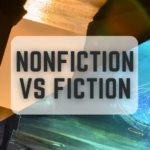Any story must have a compelling protagonist. The protagonist is the main character in your story and the one who will give your readers a firsthand look at the universe you’ve created. However, how can one write a protagonist that readers will identify with, sympathize with, and remember? Now let’s explore the fundamental components of developing a strong protagonist.
Role of a Protagonist
A protagonist is a story’s primary character; they are frequently viewed as the protagonist or the main character who moves the storyline along. They encounter difficulties and develop throughout the story, drawing readers in and providing the book synopsis with a captivating focal point. Creating a compelling protagonist is essential to holding the attention of your readers.
Protagonist vs. Antagonist
As the main figure that the story is centered around, the protagonist is essential to storytelling. They advance the plot and deal with the main obstacles that the antagonist—who opposes them—presents. In order to keep the audience interested, the protagonist’s journey—including their objectives, setbacks, and development—must be told.
Creating a dynamic, sympathetic character with distinct goals and an engaging past is essential to crafting a successful protagonist. Because of this richness, readers are able to emotionally engage with the story, increasing its effect. Writers may create more captivating and memorable stories by comprehending the role of the protagonist.
Characteristics of a Strong Protagonist
Relatability
The audience needs to be able to relate to a compelling protagonist. Because of relatability, readers are able to identify with the protagonist in some way, which heightens the interest and significance of the character’s journey.
Giving the protagonist authentic flaws, aspirations, and challenges that reflect real-life experiences will help achieve this. A protagonist’s struggles and errors enable readers to identify with the character on a personal level.
You can make the story more engaging and immersive by giving your protagonist human characteristics and feelings. This will draw readers in and keep them interested in the character’s journey.
Complexity
Complexity is necessary for a great protagonist to feel genuine and attainable. Being complex entails possessing a range of traits, anxieties, and hopes, as well as a history that influences behaviour.
The protagonist becomes more interesting and credible because of this complexity. A protagonist could, for instance, be brave but experience self-doubt, or compassionate but have a difficult past.
By allowing readers to relate to the protagonist through these layers of personality and experience, the story is made more engaging. You may make sure your story hits home on a deeper level by giving your protagonist a complex inner life.
Growth
Growth is a crucial quality of a compelling protagonist. The protagonist must to go through a lot of substantial personal growth during the narrative. This development may result from conquering obstacles, picking up lessons from errors, or developing fresh perspectives.
A great protagonist begins the story with certain shortcomings or restrictions that they progressively go over. The audience finds the protagonist to be more interesting and relatable as a result of his or her growth journey.
Character development appeals to readers because it reflects events encountered in real life. Having your protagonist experience growth throughout their arc makes them more dynamic and memorable—qualities that are crucial for a gripping narrative.
Develop Your Protagonist’s Background
Backstory
“Backstory” describes your protagonist’s past and experiences leading up to the major plot points in your story. Creating an engaging history is essential to creating a powerful protagonist.
It gives their behaviors, motives, and personality traits more nuance and context. Think about things like their upbringing, family history, previous relationships, and important life experiences that have influenced who they are.
You may make your protagonist more likable and well-rounded so that readers can relate to them on a deeper level by going into greater detail about their past. The protagonist becomes more lively and captivating for your audience as a result of this rich background, which enhances the storytelling experience.
Motivations
Knowing your protagonist’s objectives will help you develop an engaging backstory for them. Character motivations are the driving forces behind their choices and behaviors. They provide your protagonist motivation and depth, which helps your readers identify with and like them.
The protagonist’s goals, whether they be those of love, justice, retaliation, or simple survival, influence their path throughout the narrative. You may develop a compelling protagonist who connects with your audience and successfully moves the story along by giving these reasons more depth.
Goals
In developing your protagonist’s background, it’s crucial to define clear goals for them. These goals drive the narrative forward and shape the character’s journey. Whether it’s a desire for adventure, justice, love, or personal growth, these aspirations give depth to your protagonist.
Consider their motivations, fears, and past experiences when crafting their goals. By establishing compelling objectives, you create a strong foundation for your protagonist to navigate through the story’s challenges and conflicts, captivating your readers along the way.
Crafting a Compelling Personality
Strengths
Developing a strong protagonist for your novel means emphasizing their advantages to draw readers in. Resilience, tenacity, and empathy are examples of strengths that help to humanize and elevate your protagonist.
You may make a character that readers can relate to and root for by emphasizing these qualities in their choices and actions. A compelling protagonist propels your story along, stabilizing the narrative and drawing readers in for the ride.
Flaws
Embracing the protagonist’s imperfections as necessary components of their personality is key to creating an engaging protagonist. Characters with flaws are more relatable and have more depth, which draws readers in.
These flaws might be anything from general human failings like arrogance or a fear of failing to more specialized ones like insecurity or impulsivity. Your protagonist will grow and change throughout the narrative if they have weaknesses, which will ultimately make them more likable and memorable to your audience.
Quirks
Creating a protagonist that is both distinctive and compelling requires giving them unique traits. These peculiar characteristics or behaviors distinguish the protagonist from other characters. They can be behavioral, like a passion for collecting vintage coins or an unreasonable fear of clowns, or physical, like a noticeable scar or a nervous tic.
Quirks give the protagonist more personality, which helps readers identify with and relate to them. They also frequently advance the plot.
Establishing a Clear Voice
Dialogue
One of the most important tools for giving your protagonist in your novel a distinct voice is dialogue. It’s the manner in which your primary character interacts with people, displaying their struggles, goals, and personalities.
The conversation enhances the reader’s immersion in the story by providing a deeper understanding of the protagonist’s thoughts and emotions.
A realistic and genuine conversation that captures the protagonist’s distinct voice and viewpoint is essential for effective dialogue. You can develop an audience-resonant strong protagonist by writing dialogue that is engaging.
Inner Thoughts
“Inner thoughts” are essential to giving your protagonist a distinct voice. Readers will gain insight into your primary character’s motivations, emotions, and problems through these candid observations and comments.
A stronger bond is established between the character and the viewer by delving into the protagonist’s inner monologue. This relationship makes the protagonist a strong and engaging main character by enabling readers to empathize with them and follow their journey throughout the narrative.
Protagonist’s Relationships with Other Characters
Allies
For your story to have a compelling protagonist, you must establish strong bonds with allies. Characters that help and encourage the protagonist along the way are known as allies. These allies aid the protagonist in overcoming difficulties by providing support, direction, and occasionally even defence.
Allies, whether they be companions, teachers, or fellow explorers, aid in the character development of the protagonist by giving them more nuance and boosting the dynamics of the story. Your protagonist’s story can be elevated by strong allies, which will make readers find it more interesting and memorable.
Mentors
Building a strong relationship with mentors is essential to creating a compelling protagonist for your story. Mentors are knowledgeable advisors who provide the main character encouragement, guidance, and priceless lessons. They act as mentors, assisting the main character in developing and overcoming setbacks.
Mentors enhance the story and character development by giving the protagonist the skills and information necessary to overcome obstacles and accomplish their objectives. They can be a knowledgeable buddy, a seasoned professional, or a wise elderly person.
Rivals
Story protagonists frequently face opposition or challenge from competing characters. These adversaries are vital in determining the protagonist’s path and personal growth. They may have started out as friends before turning into rivals, rivals with divergent agendas, or even enemies with personal grudges.
Rivals force the protagonist to change, grow, and conquer challenges by introducing tension, conflict, and complexity to the story. Creating interesting rivals guarantees a dynamic and captivating journey for the protagonist, propelling the narrative along.
Placing Your Protagonist in the Story’s World
Setting
It’s important to think about the environment in which your protagonist will flourish when creating them. The setting creates the scene for your protagonist’s adventure, acting as the story’s backdrop. It includes the social mores, historical background, and natural surroundings that influence the experiences of your character.
You can enhance the character development of your protagonist and draw readers into their world by meticulously choosing and elaborating on the environment. The backdrop, whether it be a busy metropolis, a sleepy village, or a magical world, affects how your protagonist overcomes obstacles and develops throughout the course of the story.
Culture
Understanding the cultural context in which your protagonist lives is essential to setting them in the story’s world. A collection of people’s common ideas, practices, and mannerisms are referred to as their culture. It influences the way your protagonist sees the world, deals with others, and overcomes obstacles.
You may give your protagonist more nuance and authenticity by delving into their cultural background. To write a compelling protagonist that appeals to readers, take into account their language, customs, and societal mores. Knowing the cultural background of your protagonist will help them grow and move the story along.
Avoiding Common Pitfalls
Overpowered Protagonists
Avoiding the pitfall of overpowering a character is essential to writing a gripping protagonist. Overpowered heroes have skills or powers that make conquering obstacles too simple, which detracts from the tension and interest in the narrative. Rather, concentrate on creating a protagonist who has realistic shortcomings.
This fosters character development and enables readers to identify with the protagonist’s journey, resulting in a more compelling and fulfilling reading experience.
Lack of Flaws
It can be tempting to make your protagonist perfect when writing them, but doing so can detract from the strength of your narrative. Readers tend to find flawless characters unrealistic or unrelatable. It’s crucial to assign your protagonist flaws or limitations that they will have to overcome throughout the course of the narrative.
Because of these imperfections, they become more approachable and appealing to your audience. You can develop a more engaging and dynamic protagonist for your story by eschewing the temptation of designing a perfect figure.
Conclusion
A sympathetic, complicated, and developable character is essential to a compelling protagonist. You may make a protagonist that readers will identify with and remember by giving them a rich backstory, a captivating personality, and enough emotional depth. To keep your protagonist believable and appealing, stay true to them and steer clear of typical traps.
















